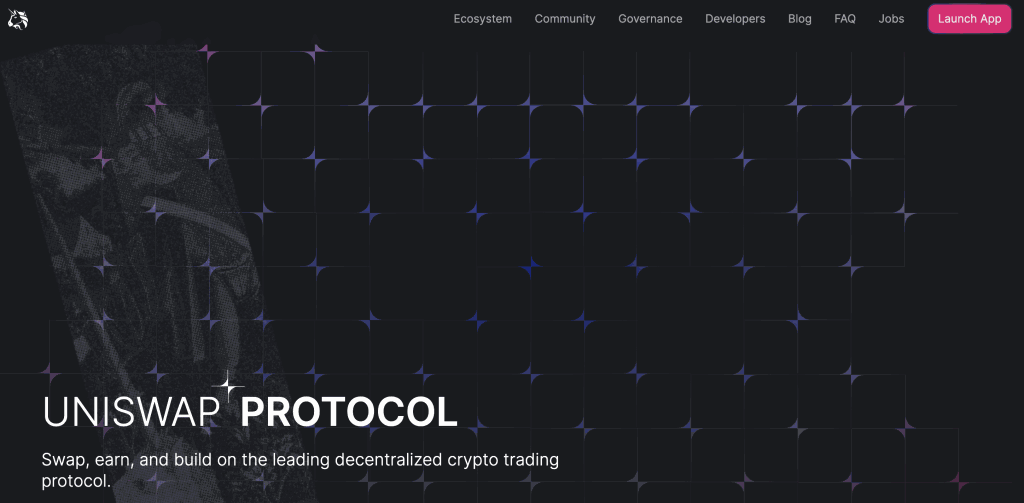
By offering a decentralized exchange (DEX) platform that enables users to trade cryptocurrencies directly from their wallets, Uniswap has transformed the field of decentralized finance (DeFi). We will explain what Uniswap is, how it functions, and provide a step-by-step tutorial on how to trade on it in this blog post.
1. What is Uniswap?
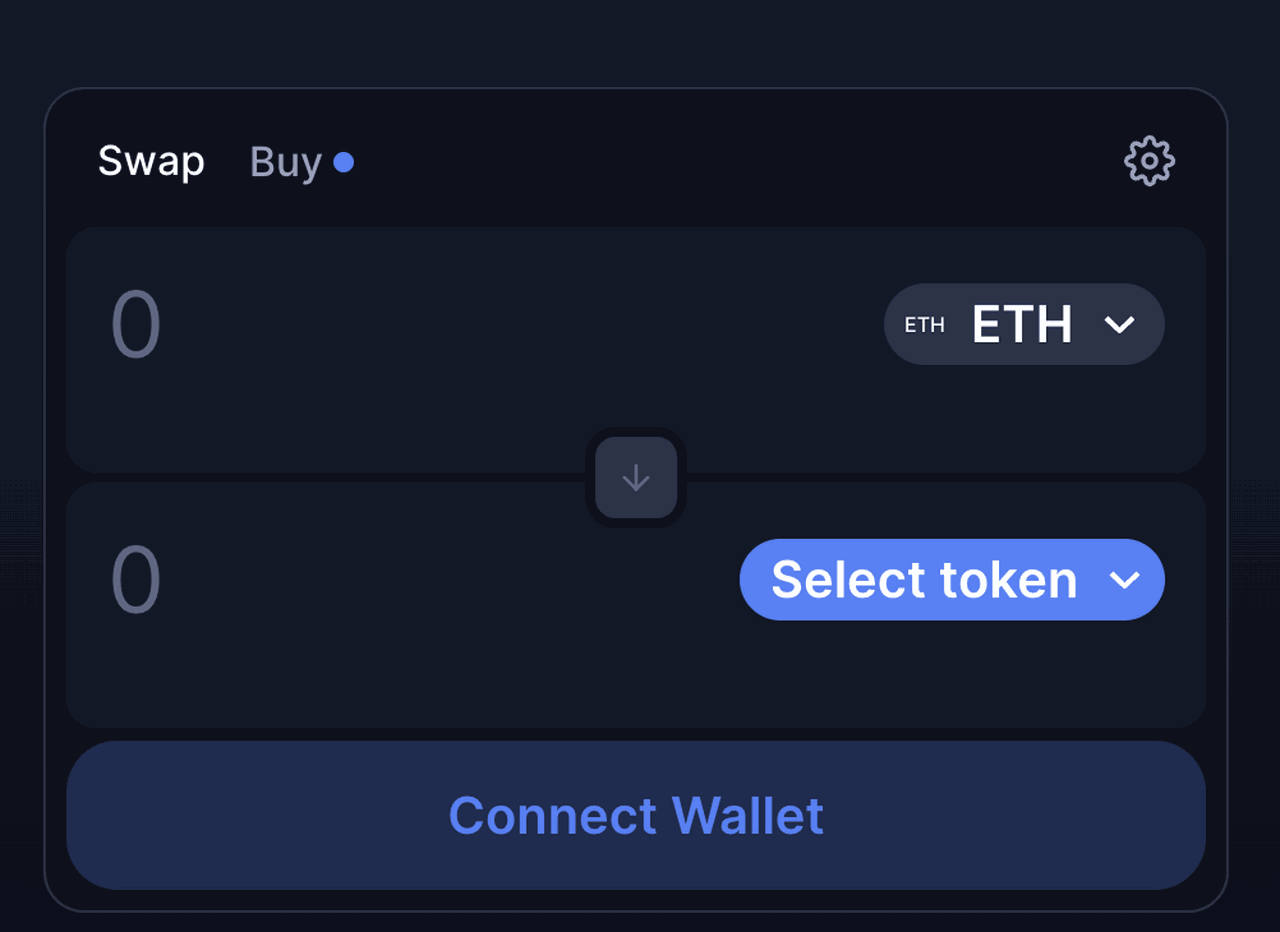
The Ethereum blockchain-based open-source Uniswap facilitates direct swapping of ERC-20 tokens. Hayden Adams established it in November 2018, and because of its distinctive method of providing liquidity, it has grown significantly in popularity within the DeFi community.
Unlike conventional centralized exchanges, Uniswap does not rely on order books or central authorities to facilitate deals. Instead, it uses liquidity pools and automated market-making (AMM) algorithms to guarantee that customers can always execute trades at fair market pricing.
2. How Does Uniswap Work?
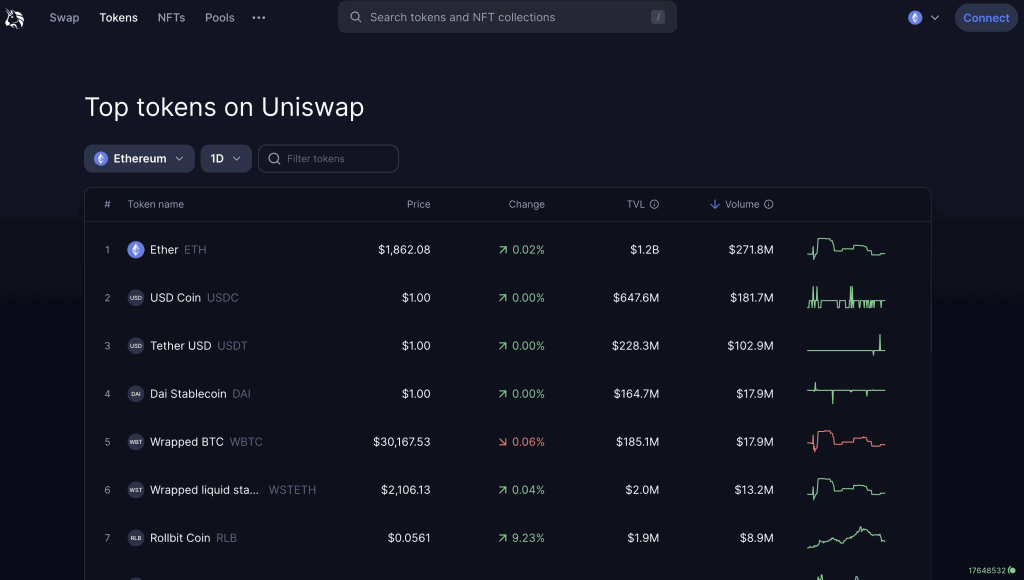
A set of smart contracts on the Ethereum blockchain power Uniswap’s operations. The capacity of Uniswap to establish liquidity pools for various token pairs is its key feature. Liquidity providers put two tokens of equal value into a smart contract to fund these pools.
Users input their tokens to the relevant pool’s smart contract when they want to trade one token for another, and the trade is then automatically carried out based on predetermined algorithms. As a result, there is no longer a need for direct communication between buyers and sellers because there is always enough liquidity in each pool to support trades.
The key mechanism behind Uniswap’s automated market-making algorithm is called the constant product formula or x*y=k. This formula ensures that as trades occur, the product of reserve balances remains constant, thereby maintaining a stable price equilibrium between the two tokens in the pool.
Difference between Uniswap V1 and Uniswap V2
Many features introduced in Uniswap V2 provide ERC 20 to ERC 20 token pools, such as the original price and flash swap.
Let’s analyze the differences between the two versions
Uniswap V1 swap
Uniswap V1 always makes two trades. The first trade is to swap the ERC20 token for ETH, and the 3rd trade is to swap ETH’s return to the desired ERC20 token. In other words, end users pay twice.

This causes some limitations when using Uniswap:
- Higher fees
- Uniswap is closely tied to the use of ETH.
- ERC20 tokens cannot be swapped directly with other ERC20 tokens.
- For the above reasons, Uniswap V2 was created.
Uniswap V2 swap
Uniswap V2 offers end users 3 different options to swap their tokens using the “Router Contract.”
The router contract knows every exchange contract that implements the Uniswap V2 protocol.
Here are three swap possibilities:
- One is a direct swap between two pair of ERC20 tokens. For example, two stablecoins like DAI/USDC can be useful for traders.
- Traditional swap via ETH, where you must pay 2 times in fees.
- Swap Custom path in which you can build a more complex path like DAI/ETH, ETH/BAT, BAT/USDT, and USDT/USDC to swap your DAI to USDC. Typically, this provides traders with arbitrage opportunities.

Uniswap V3: Uniswap V3 is the third Uniswap decentralized exchange protocol version. It introduces concentrated liquidity, multiple fee tiers, and non-fungible tokens (NFTs) called “liquidity positions.” These features provide more flexibility and efficiency for liquidity providers while maintaining decentralization and permissionless trading.
3. Benefits of Using Uniswap

Uniswap offers several advantages over traditional centralized exchanges, including:
a. Decentralization and Security
Uniswap is a decentralized open-source system that runs without the aid of middlemen because it was designed on the Ethereum platform. This eliminates the possibility of theft or hacking that comes with centralized exchanges and gives users complete control over their money.
b. No KYC Requirements
With Uniswap, anyone with an Ethereum wallet may begin trading immediately, unlike most centralized exchanges that demand customers to go through drawn-out KYC (know your customer) processes. Users’ privacy is protected while it is more widely available.
c. Lower Trading Fees
Because of its automated approach and lack of intermediaries, Uniswap charges trading fees that are much cheaper than those of typical exchanges. To reward liquidity providers for supplying liquidity to the network, the platform levies a 0.3% fee on each deal.
d. Wide Range of Tokens
Uniswap offers various ERC-20 tokens listed on the Ethereum blockchain as a decentralized exchange. Users can trade less well-known or recently released tokens that might not be offered on centralized exchanges because of this.
4. The Risks of Uniswap
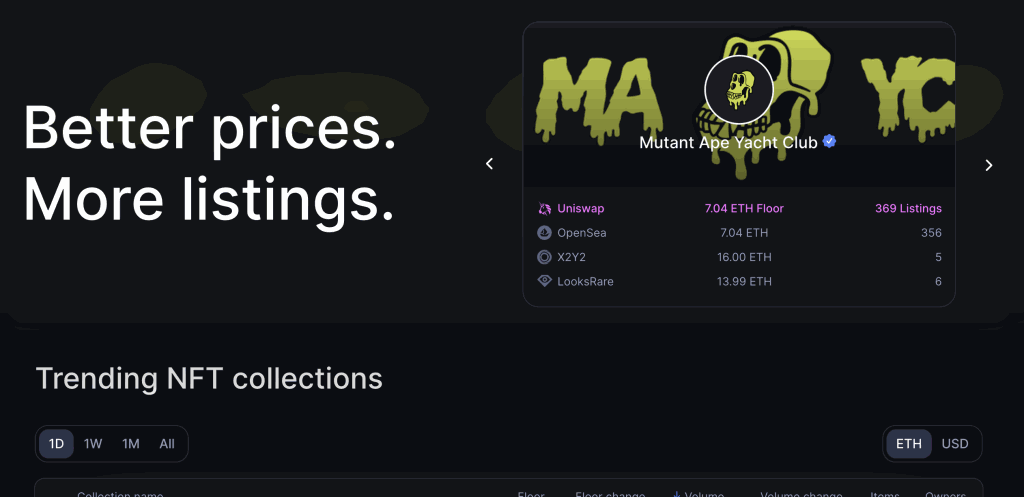
Sure! Here are more detailed explanations for each risk associated with Uniswap:
- Impermanent Loss: Impermanent loss occurs when the price of the tokens in a liquidity pool changes while you provide liquidity. If the prices of the tokens diverge significantly, you may end up with fewer tokens than if you had held them. This is because Uniswap’s automated market-making algorithm adjusts the token ratios in the pool based on supply and demand, which can result in potential losses.
- Smart Contract Vulnerabilities: Uniswap operates on smart contracts subject to potential vulnerabilities and security risks. While smart contracts aim to be decentralized and secure, they can still be susceptible to bugs or hacking attempts that could lead to funds being lost or stolen. It’s important to note that audits and security measures are performed on the codebase, but no system can claim to be completely immune from risks.
- Slippage: Uniswap uses an automated market-making mechanism that relies on a constant product formula to determine token prices and execute trades within a given pool. However, slippage can occur during periods of high volatility or when trading large amounts of tokens. Slippage refers to a difference between the expected price of a trade and the executed price due to market fluctuations and transaction delays.
- Regulatory Uncertainty: The regulatory landscape for decentralized exchanges like Uniswap is evolving and varies across jurisdictions. There may be uncertainties regarding how regulators will view and regulate these platforms regarding compliance, taxation, or legality. Different countries may have different perspectives on decentralized finance (DeFi) platforms, which can introduce regulatory risks for users.
- Limited Liquidity: While Uniswap provides liquidity for various token pairs, less popular or newly listed tokens may have limited liquidity initially. This means there may not be sufficient buyers or sellers at your desired price level, leading to difficulties in executing trades or acquiring tokens efficiently. It is essential to consider liquidity levels before engaging in trading activities.
- User Error: As with any financial platform, there is a risk of user error when interacting with Uniswap. This can include mistakes in entering trade parameters, approving transactions without fully understanding the consequences or mismanaging private keys and wallets. Users should exercise caution, double-check their inputs, and ensure they understand the actions they are taking on the platform to avoid potential losses.
It’s crucial to note that while these risks exist, Uniswap has gained popularity due to its decentralized nature and ability to provide access to various tokens. However, it’s always recommended that users do their own research, seek professional advice if needed, and only invest what they can afford to lose when participating in any DeFi platforms like Uniswap.
5. How to Trade on Uniswap – Step-by-Step Guide
Now that we understand what Uniswap is and how it works let’s walk through the process of trading on the platform:
Step 1: Set up an Ethereum Wallet To use Uniswap, you will need an Ethereum wallet that supports ERC-20 tokens, such as MetaMask or Trust Wallet. Install your preferred wallet extension or mobile app and create a new wallet if you don’t already have one.
Step 2: Access Uniswap Interface Visit the Uniswap website (https://app.uniswap.org/) or any other interface compatible with the Uniswap protocol. Connect your Ethereum wallet to the interface by clicking the “Connect Wallet” button and selecting your wallet provider.
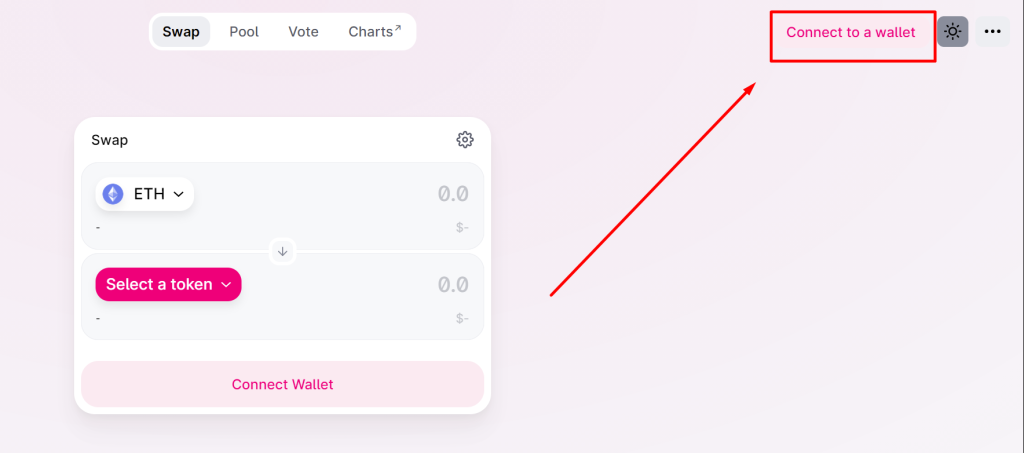

Step 3: Choose Tokens to Trade On the Uniswap interface; you will see a list of available token pairs. Select the tokens you want to trade from the dropdown menus. For example, if you want to trade Ethereum for DAI stablecoin, choose ETH and DAI from the respective dropdowns.
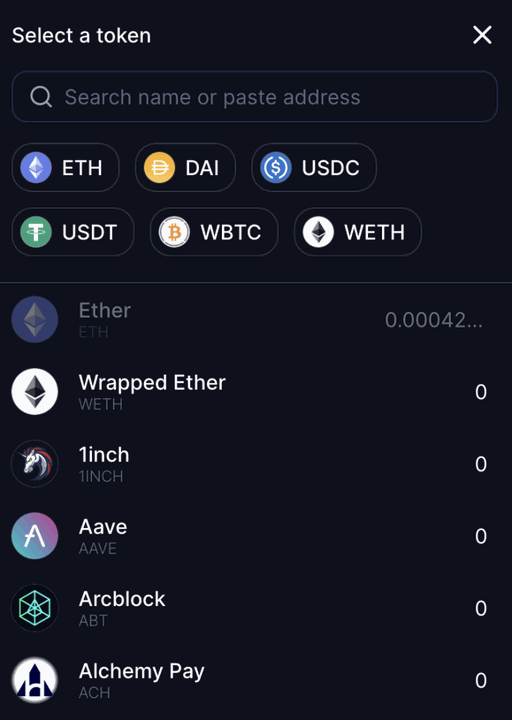
Step 4: Check Prices and Liquidity Before executing your trade, review the current prices and liquidity of the selected token pair. Uniswap provides real-time information on prices and trading volumes in each pool, allowing you to make informed decisions.
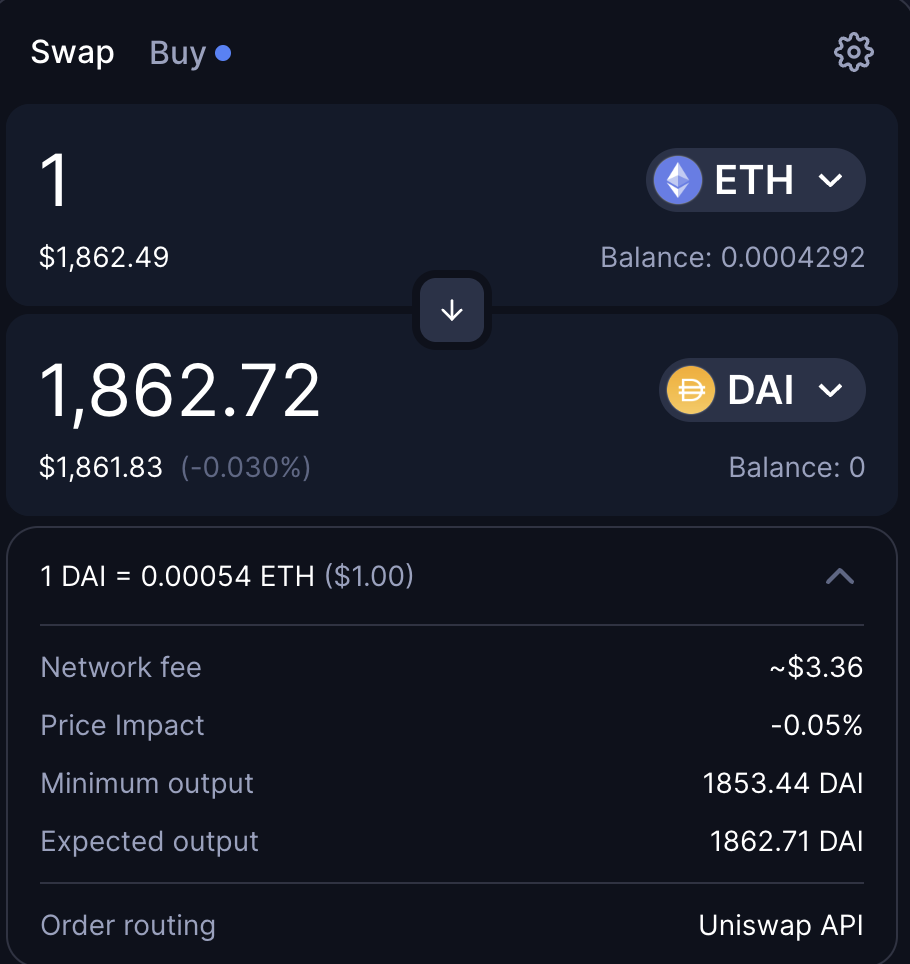
Step 5: Adjust Slippage Tolerance (Optional) Slippage refers to the difference between an expected price and the executed price of a trade. You can adjust slippage tolerance on Uniswap according to market conditions or personal preferences. Higher slippage tolerance increases the chance of successful trades but may result in worse prices.
Step 6: Confirm Transaction Once you have reviewed all the details, click on “Swap” or “Exchange” button, which will trigger a pop-up window in your wallet interface. Confirm the transaction by paying gas fees associated with executing transactions on the Ethereum network.

Step 7: Wait for Confirmation After confirming the transaction, wait for it to be included in a block on the Ethereum blockchain. This process can take a few seconds to several minutes depending on network congestion.
Step 8: Verify Transaction Once your transaction is confirmed, verify that it was executed successfully by checking your wallet balance and transaction history. You should see an updated balance of both tokens involved in the trade.
6. Tips for Trading on Uniswap
Here are some tips to enhance your trading experience on Uniswap:
a. Gas Fees Considerations
On the Ethereum network, transaction execution costs are referred to as “gas fees.” Gas prices during peak hours may be high due to network congestion. Before making any purchases, think about checking gas fee estimators like GasNow or GasTracker.
b. Use Reputable Tokens
It’s crucial to pick coins with a solid reputation and consistent liquidity while trading on Uniswap. Tokens with low trading volume or those just released may have less liquidity, which could result in more slippage and possible market manipulation.
c. Be Mindful of Impermanent Loss
Impermanent loss occurs when providing liquidity in a pool where token prices change significantly over time. Before becoming a liquidity provider, understand the risks associated with impermanent loss and consider long-term investment strategies.
d. Stay Informed About Projects
Before trading a project’s tokens on Uniswap, do your homework on the project. Read whitepapers, keep up with project developments, and assess the teams’ reliability. Risks can be reduced by being informed about the initiatives you invest in.
Conclusion

Uniswap has emerged as a game-changer in decentralized finance, offering users a secure, accessible, and low-cost way to trade ERC-20 tokens directly from their wallets. By following this complete guide, you should now have a solid understanding of how Uniswap works and feel confident in starting your journey into trading on this innovative platform. Remember to stay informed, exercise caution when trading volatile assets, and always conduct thorough research before investing in any cryptocurrency project.


